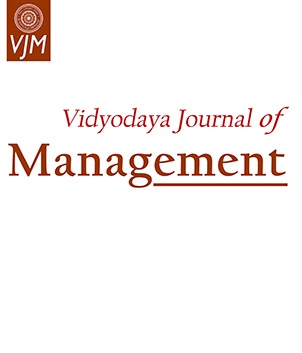The Impact of Financial Sector Development on Economic Growth: Evidence from Sri Lanka
DOI:
https://doi.org/10.31357/vjm.v9iII.6587Abstract
The objective of this study is to examine the impact of financial sector development on economic growth in Sri Lanka by taking two complementary sectors, namely banking and equity markets, to represent the financial sector. All previous studies in the Sri Lankan context have examined this relationship employing either the banking sector variables or equity market variables to represent the financial sector. This study is in favour of the supply-leading hypothesis and it tests the empirical validity of the hypothesis. The proposed model has been estimated with five banking sector variables and two equity market variables. Autoregressive Distribution Lag (ARDL) bounds testing approach is employed to identify the existence of short- and long-run relationships. The study relies on quarterly data from 2002:01 to 2020:04. Findings reveal that there exists a long-run relationship between financial sector variables and economic growth. More specifically, the size of financial intermediaries, interest rate, monetization, and size of the stock market have a significant positive impact on economic growth in the long-run. Somewhat surprisingly, the availability of credit to the private sector has a significant negative impact. All seven variables significantly influence economic growth in the short-run. Overall, the results of this study support the supply-leading hypothesis or the notion that financial sector development affects economic growth. These findings are mostly in line with previous literature. The results of seven diagnostic tests show that the estimated model is adequate for the purpose and estimation results are reliable. The study has some important policy implications.
Keywords: Financial sector development, Economic growth, Banking sector development, Equity market development, ARDL






